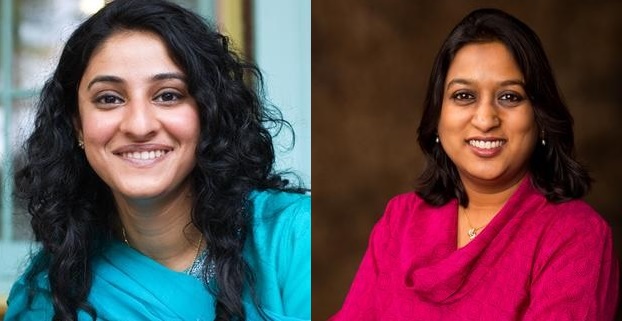
If you’re a parent seeking South Asian books for your kids, or keep your eye on the ever-growing scene of South Asian American literature, you may have heard about KitaabWorld, the online retailer and platform for South Asian children’s literature.
Recently, KitaabWorld moved into a larger world, from selling children’s books to now publishing them, by putting out two books this spring in North America — Room in Your Heart, a book about Bhutanese culture, and The Boy Who Asked Why, a biography about the young Bhimrao Ambedkar.
I recently sat down for a chat with Kitaabworld’s co-founders, Gauri Manglik and Sadaf Siddique, to talk about their new horizons, and the work they already do to bring more South Asian narratives and culture into the lives of children from all backgrounds. (This interview has been lightly edited.)

Aditya Desai: To start, do you guys call yourself a site, a store, or something else?
Sadaf Siddique: Essentially for us, it’s very important to create context around these books. Initially when we started, we were talking about books for our own kids growing up South Asian in the U.S., and they were looking for children who reflected them, and just little things, calling grandparents nana/nani dada/dadi ama/ami, baba, that kind of thing, you know very basic. And we didn’t find it. So we said “Ha, we should write it for ourselves!”
But we took a look around at the landscape and we discovered a lot of books. But then I think for us it was also important not just seeing this in schools and libraries, also that teachers and librarians needed context to this idea of casual diversity, that it’s not just a book about an Indian festival or clothing as costume. It’s more important to show these kids doing regular things, but they happen to be South Asian.
Gauri Manglik: That’s a good question. What is our identity? That’s something we struggle with often. We don’t consider ourselves a store, in that we want to replicate a little bit of the physical bookstore model online, so it’s more of a resource on the side. We have that bookstore piece of it. But we want to provide that relevant content on the site to give people a place where they can discover a lot of cool information.
AD: So, you’re more kind of an education facilitator.
SS: Yes.
AD: That’s interesting. I was looking through the inventory, and you guys have a huge variety. I was expecting something like ABC-123, or as you said “this festival” or “this clothing” but there’s more advanced stuff like biographies, or stuff like Chitralekha which is what I grew up on. Was it something you had in mind to have all of those components or was that something that grew organically?
GM: Obviously it all starts with a problem. We wanted to make it easier for teachers, parents, librarians, to weave South Asian culture into their everyday lives…We wanted to offer the maximum choice to people, because “South Asia” by itself is very diverse. We have so many languages, religions, subcultures; it’s kind of its own universe in a way. So, to showcase it through our website, we organized our books by countries, languages, subject. And also, around of course format, such as a picture book versus a middle grade novel.
“’South Asia’ by itself is very diverse. We have so many languages, religions, subcultures; it’s kind of its own universe in a way.”
SS: And variety was also important in a way. You have the “ABC books” but those are easier to find. How about a book on Ambedkar, or how about a book on learning something slightly different than what you’re used to? So, variety was important for us, but just in doing our research, we got so excited by all these books. We have to reign ourselves back sometimes. We can’t put everything out there.
AD: What made you think it was the time to get into publishing?
GM: As we curated content, we realized there were gaps that existed. The narrative was all very “India” or “Gandhi” so we felt like there was room to talk about Ambedkar and tie it into the racial issues that people in the U.S. face, or we saw there were very few or almost no stories about Bhutan. Indian children’s publishing space is at its peak right now, very active with a lot of good books coming out. And we are uniquely placed to see what, from those books, will parlay well into the U.S., not just to Indian kids but for all children. Many traditional U.S. publishers are also getting books from India, but that seems to me more of a check-the-box approach.
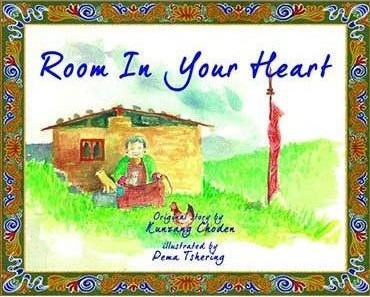
“Our aim really is to talk to schools and librarians and make these stories as mainstream as possible”
SS: Our aim is not just to talk to a niche of South Asians, our aim really is to talk to schools and librarians and make these stories as mainstream as possible. There are certain biases and gaps and reasons why people will not pick up certain South Asian stories. So even the stories we pick up to publish — one is The Boy Who Asked Why and another is Room In Your Heart — we’ve included information in the back, fun facts about Bhutan, things that people can do, and we’re working on a teacher’s guide with the Ambedkar book to make it easier for teachers to just say, “Oh, I could do this for my non-fiction biography lesson.” Ambedkar’s story easily ties into the issues with social justice and racial discrimination, the conversations that are happening in this country right now. It just expands your perspective; it brings a more global approach to these issues as well.
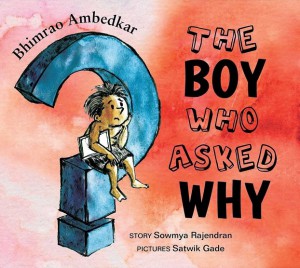
AD: What kinds of reactions do you get? Are there any memorable reactions or impressions you get, especially since what you’re presenting is not the “chicken tikka masala” version of Indian history?
SS: Our story times build community…So, you know California’s affected a lot by drought — and there’s this wonderful story called A Bhil Story, which is set in an Indian tribe called Bhil, and it’s a wonderful folk tale about what they did to address drought in their region. The art of that book is Pithora art, similar to pointillism and Aboriginal art. We did this at a museum and got an artist, and she did a bunch of art activities for the kids. They created a tree of life they put up their artwork on, and now it’s up at the museum still. So, it’s very different in terms of what we do, but the outreach is an important aspect of our work.
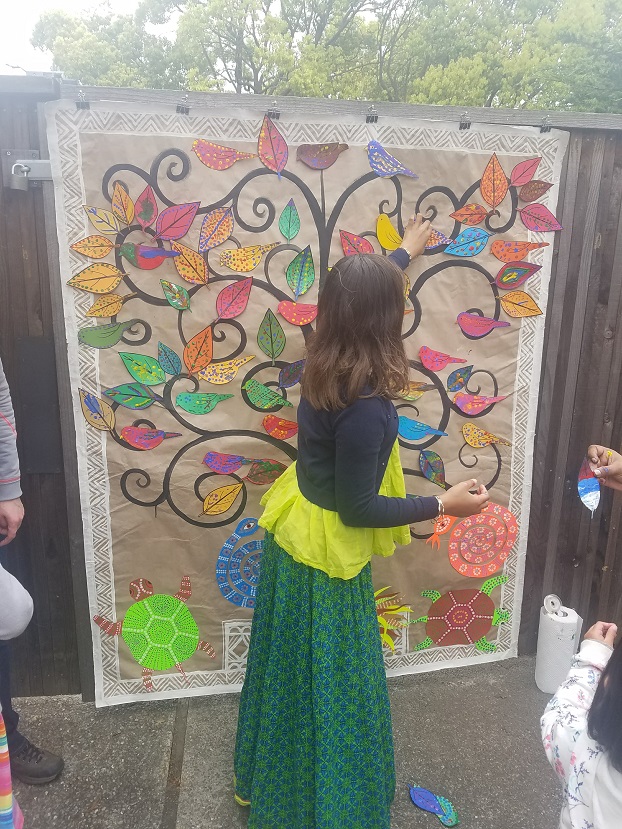
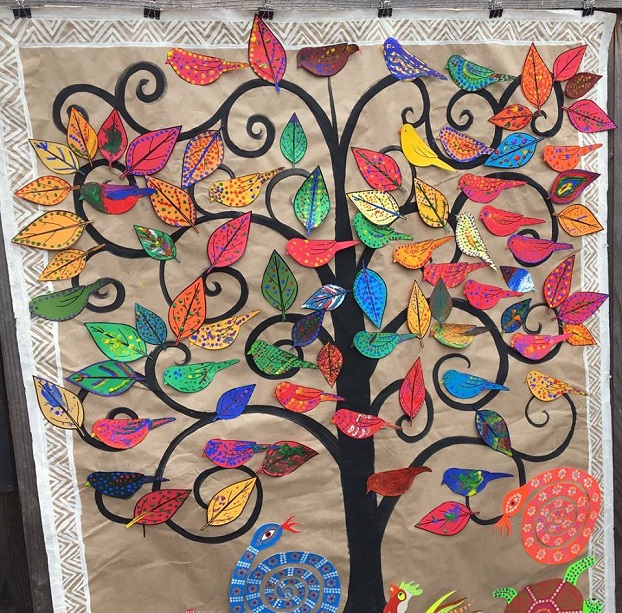
AD: So, it makes it like an interactive experience for the kids.
GM: You know this light in the kids’ eyes when they hear a person of perceived authority talk about something from their culture or their home that they can relate to.
The book we were reading last week was called Four Feet, Two Sandals, and somewhere in the text it said, “Salaam Aleikum” and there was a girl from Egypt sitting there, and I could see a lightbulb go off in her head. There’s this book called The Sandwich Swap which is about these two best friends, and they bring different lunches and fight over it. One of them brings a hummus and falafel sandwich, and one brings a peanut butter and jelly sandwich. So, there was this Arab kid and he goes, “I love hummus!” and “I eat hummus every day!” and was so excited, and he came and hugged us after the story time. So, it’s really the validation not just from their home but in the classroom, and that’s what I love about this, I think.
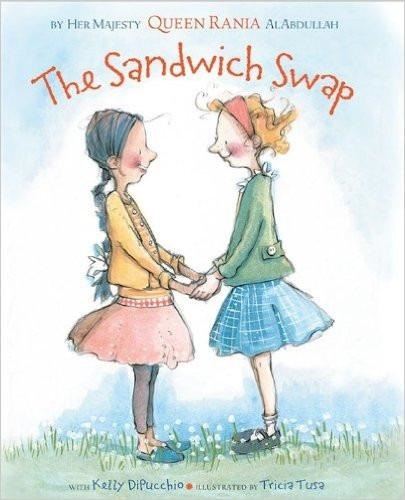
SS: And that there is a book that you can go back to and see yourself.
GM: The reality is that that’s what happens in many immigrant homes — your culture stays more in your house, and in school you’re [trying to] fit in. This teacher bought a book from us, There is Roti in my Lunch Box, and it’s kind of a simple book. But the story is about this girl who takes rotis in her lunch box and people start making fun of her and the teacher gets pulled in and she manages the situation. But [this teacher] had emailed us after he’s read it in his kindergarten classroom and asked the kids, “What should she have done when she was being made fun of?” and he was shocked that most of the kids said, “Why couldn’t she just bring something else?”
SS: So that’s important to us. Start early, expose kids to these things early on.
GM: The demographics are changing, there’s data to say that in 2040 there would be more children of color than white. The publishing industry itself is not very diverse. So, we’re all trying to do our bit. It’s a collective effort in that sense.
A: In the past few weeks we’ve been talking a lot about what role do youth or children have in activist enterprises. Is children’s literature an activism? Where do you see the relationship between children’s literature and activism?
SS: I think what we try to do is inspire that conversation in a different way. You know, it’s so awesome these kids are fighting for every kid to be safe to go to school, but if you look around you — what is Malala’s story? These kids were getting banned from going to school, and she was shot because she was trying to change that. So, there is an example in there that links it to a larger issue as well. You can expand that conversation yes — here it’s very much about no guns and schools as safe spaces, but expand that conversation a little, tie it with what Malala did, what her life was about, there’s a role model in that.
We have a great story that was SABA’s [South Asia Book Award] 2016 book of the year [Dear Mrs. Naidu], about this one girl who lives in a slum and her best friend tries to go into a private school and she starts mobilizing the community to say, “why does he get all of these resources, when we’re all entitled these resources?” and she actually mobilizes an entire community to develop her slum school.
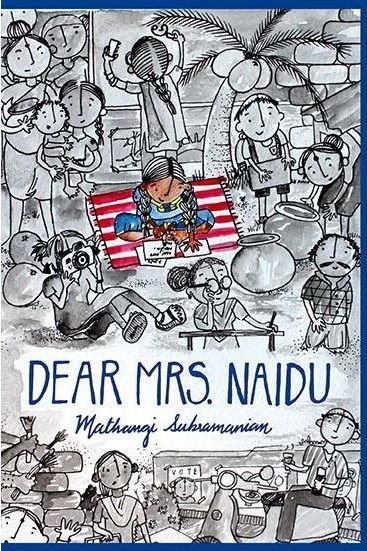
GM: [It was] based on the Right to Education Act in India. So, this book won the South Asian Book Award in 2016, soon after we had started Kitaabworld, and we realized that this book, even with this whole SABA award, wasn’t available in the U.S.! I think there were some copies being sold on Amazon for a crazy price, but beyond that…
SS: So, it goes back to the discovery issue that we try to address, and that is why we also decided, “yes we need to have a bookstore because what’s the point of telling people about all of these award-winning books and you can’t get them?” So, it’s very cyclical.
GM: Interconnected.
AD: You mentioned you had kids of your own. How do they react? Do they get a kick out of it?
SS: I think they do because they’ll remember the books they read earlier, and they’ll get so excited when someone has a similar name, or they recognize clothes they’re wearing, foods they’re eating, and it stays with them. There’s this story [about a hungry coat from] Mullah Nasruddin (Tales of Mullah Nasruddin), who’s this well-known character all across the Islamic world. He gets invited to a party where people ignore him until he gets this fancy coat, and then everybody’s talking to him. He goes “oh you didn’t invite me, you invited my fancy coat.” So, one day my son was eating, and he had food all over himself and I asked, “why is it all over your coat,” and he goes, “because the coat is hungry.”
GM: And I always hear, “is this a KitaabWorld book or is it not? “
SS: But they get excited when they see a similar book that we’ve been talking about in their school. It validates that for them.
GM: My boys are eight and four, so they’re right in the throes of reading and writing, and I can see the moments of inspiration. We’re always finding new books to read, and talking about writing, so I think it’s in the environment, that’s the thing I love. It’s nice to populate the house with books.
SS: And they’re our little helpers also occasionally. They’ll help us get stuff together.
AD: They’re always the easy interns.
SS: Honestly, they’ve been our inspiration for a lot of what we do.
***
Aditya Desai lives in Baltimore, currently teaching writing and revising a couple novels that he keeps threatening to finish someday. He received his MFA in Fiction from the University of Maryland, College Park. His stories, essays, and poems have appeared in B O D Y, The Rumpus, The Millions, The Margins, District Lit, The Kartika Review, CultureStrike, and others, which you can find most of at adityadesaiwriter.com. Find him on Twitter @atwittya.
Additional reading:
Counter Islamophobia Through Stories
Searching For Nuance In Today’s Landscape Of South Asian Children’s Stories
Q&A With Sailaja Joshi, Founder of Bharat Babies
American Teen Romance, Desi-Style: When Dimple Met Rishi
Q&A With Maya Makker, Founder of Nala – A Retreat for Young South Asian Women












